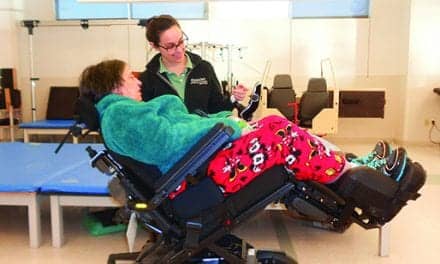 |
Recently, actor Michael J. Fox appeared in the news as the latest celebrity advocate for stem cell research. Fox, who was diagnosed with progressive Parkinson’s disease in the early 1990s, believes that such research might lead to a cure, for not only Parkinson’s patients, but millions of individuals currently coping with incurable conditions. Fox’s plight has brought the controversial topic of stem cells even deeper into the public forum.
Since 1998, when scientists isolated the first stem cells at the University of Wisconsin and Johns Hopkins, research has yielded impressive results that could potentially lead to breakthroughs in just about every aspect of healing, including arthritis, diabetes, spinal cord injury, and disabling neurological disorders. Stem cells—the body’s master cells—form in the early stages of embryonic growth, and then develop into every cell and tissue type in the body. (For example, bone cells can be created in the laboratory, and then be used in bone repair without the problems of tissue rejection.) Thus, stem cells potentially offer a renewable source of replacement cells to treat diseases, conditions, and disabilities.
Despite its scientific promise, this technology has elicited powerful discussion over the past 8 years. Prominent lawmakers, religious leaders, and scientists have debated acrimoniously over the moral implications of funding research that often uses stem cells derived from human embryos and adult bone marrow. (As recently as July 2006, President Bush vetoed a Congress-approved bill that would have allowed expanded federally funded medical research using embryonic stem lines.)
The major stumbling block for those in favor of stem cell research seems to come from a large voting block of citizens with deeply held religious beliefs that do not approve of the technique. However with the recent election results, perhaps stem cell advocates will gain the momentum required to pursue government-sanctioned research. Only time will tell. Unfortunately, too many patients don’t have that time to spare.
There is only so much that traditional treatments, such as medication, surgical options, and physical and occupational therapies, can do for these patients. As their disease states progress, the effects of such treatments will diminish. In order to truly help these individuals, we must look to new possibilities in not just treating their conditions, but actually curing them. Most scientific researchers will agree that stem cells are currently the only option of real significance for finding a cure. Regardless of individual opinion of that statement, is it fair to deny a person suffering with a debilitating disease—such as Parkinson’s or any other ailment or injury—even the potential chance of finding a cure?
Simply, federal funding is needed for stem cell research to successfully proceed, and to keep the hopes of many going in the search for new cures. To quote Michael J. Fox in an interview with CBS news anchor Katie Couric, “This is not politics, this is life.”
—Rogena Schuyler Silverman




